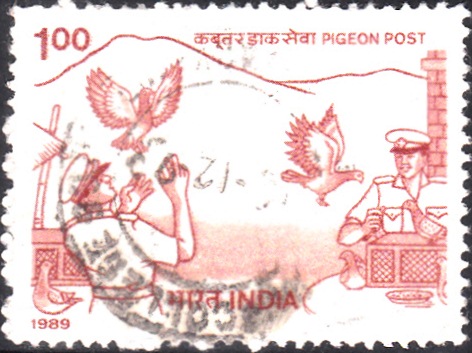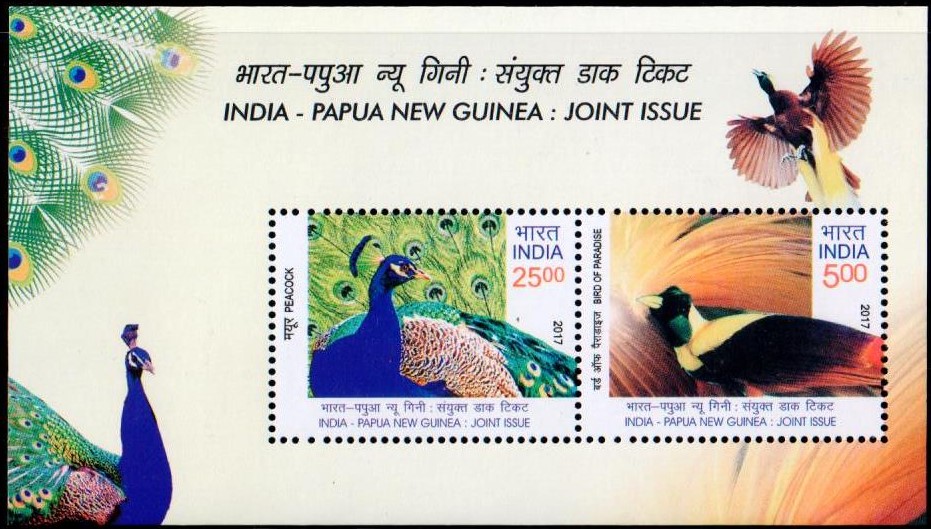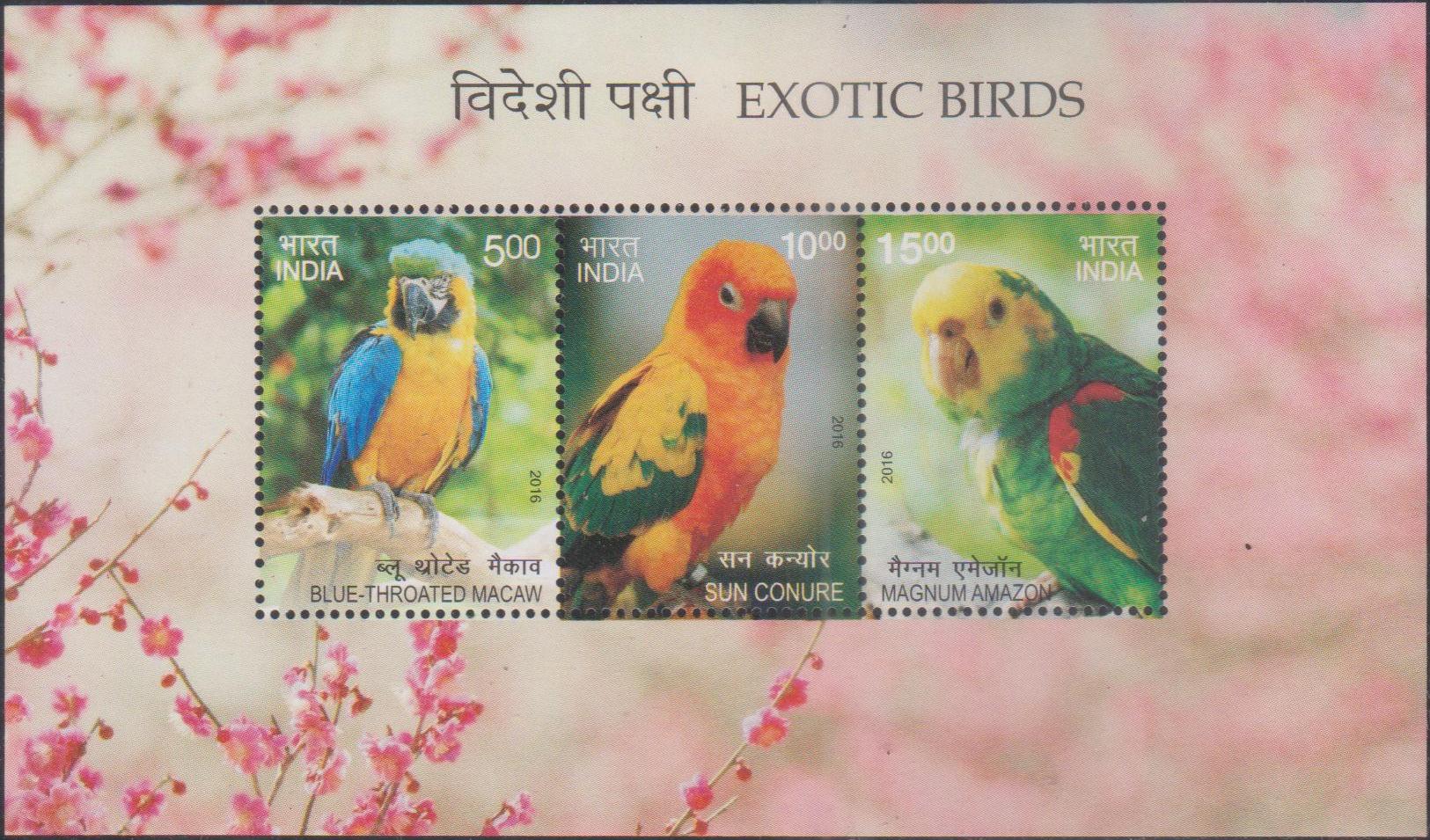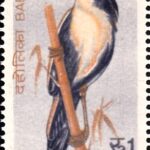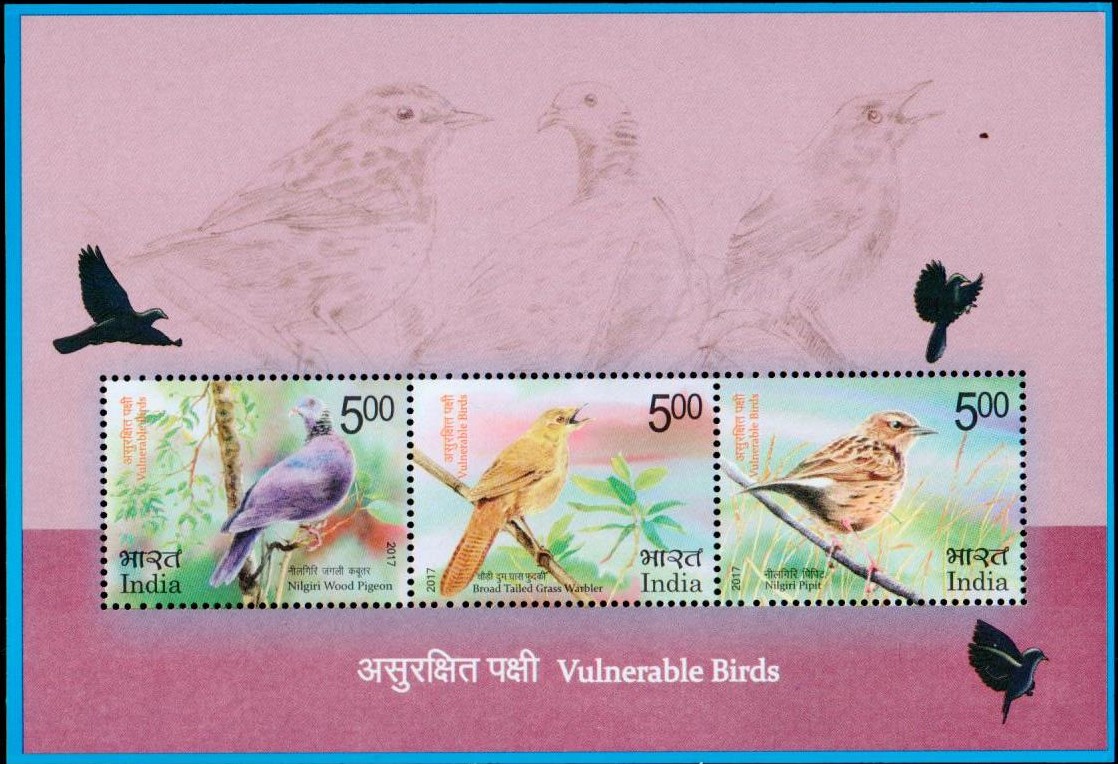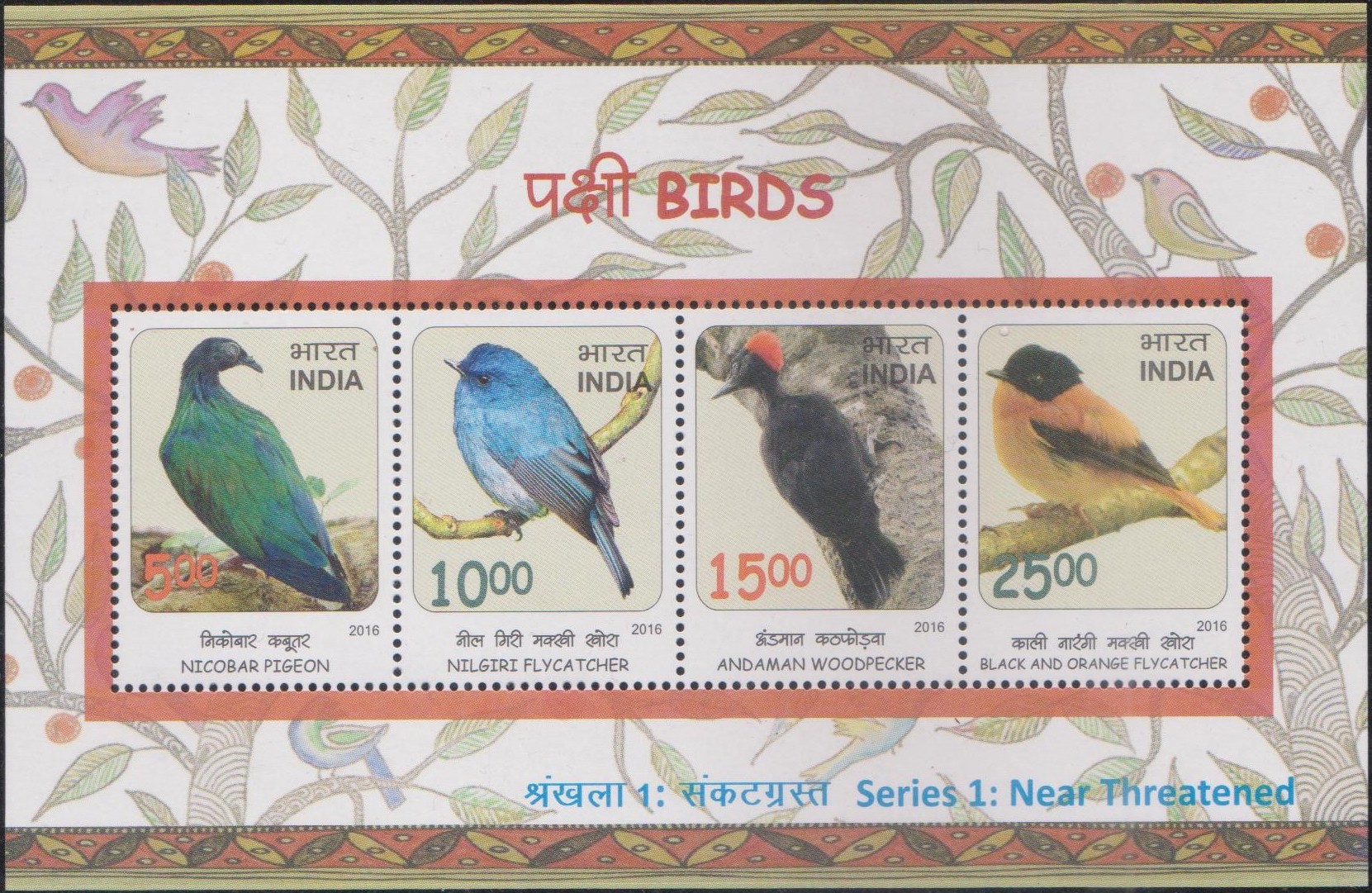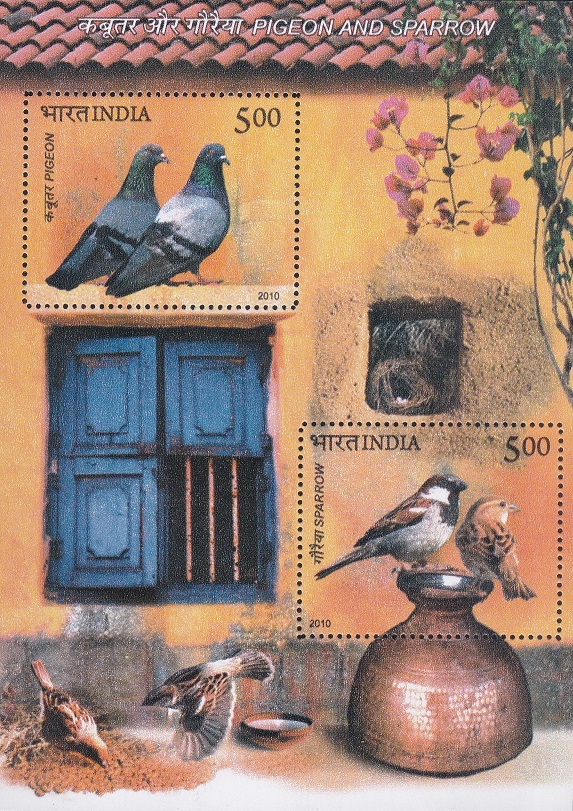
Pigeon and Sparrow
A Miniature Sheet consisting of 2 nos of commemorative postage stamps on Birds of India :

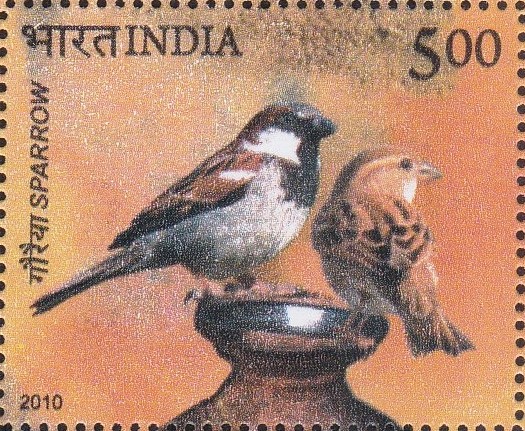

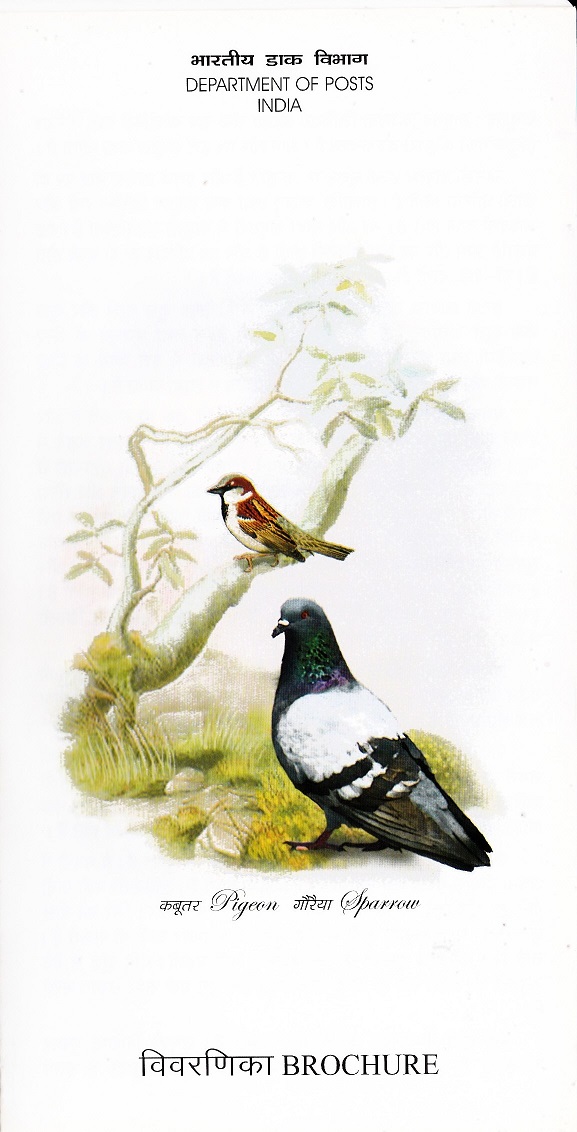 Issued by India
Issued by India
Issued on Jul 9, 2010
Issued for : The Department of Posts is happy to issue a set of special postage stamps on the House Sparrow and Rock Pigeon.
Credits :
Stamp & FDC : Sankha Samanta
Cancellation : Alka Sharma
Type : Miniature Sheet, Mint condition
Colour : Multi colour
Denomination : 500 Paise each
Stamps Printed : 0.8 Million each
Miniature Sheets : 0.4 Million
Printing Process : Photogravure
Printer : India Security Press, Nasik
Pigeon :
- The Rock Pigeon (Columba livia), or Rock Dove, is a member of the bird family Columbidae (doves and pigeons). In common usage, this bird is often simply referred to as the “pigeon“.
- Wild Rock Pigeons are pale grey with two black bars on each wing, although domestic and feral pigeons are very variable in colour and pattern. There are few visible differences between males and females. The species is generally monogamous, with two squabs (young) per brood. Both parents care for the young for a time.
- Habitats include various open and semi-open environments, including agricultural and urban areas. Cliffs and rock ledges are used for roosting and breeding in the wild and in cities the artificial rocks are provided by ledges and roof spaces.
- The adult is generally 32-37 cm long with a 64-72 cm wingspan. Pigeons are very agile fliers that can reach speeds up to 85 miles per hour with their tapered, falcon like wings. It has a dark bluish-gray head, neck, and chest with glossy yellowish, greenish, and reddish-purple iridescence along its neck and wing feathers. The iris is orange, red or golden with a paler inner ring, and the bare skin round the eye is bluish-grey. The bill is grey-black with a conspicuous off-white cere, and the feet are purplish-red.
- The adult female is almost identical to the male, but the iridescence on the neck is less intense and more restricted to the rear and sides, while that on the breast is often very obscure.
- The white lower back of the pure Rock Pigeon is its best identification character, the two black bars on its pale grey wings are also distinctive. The tail has a black band on the end and the outer web of the tail feathers are margined with white.
- Pigeons feed on the ground in flocks or individually. They roost together in buildings or on walls or statues. When drinking, most birds take small sips and tilt their heads backwards to swallow the water. Pigeons are able to dip their bills into the water and drink continuously without having to tilt their heads back. When disturbed, a pigeon in a group will take off with a noisy clapping sound.
- Pigeons can seem very vocal in large flocks. The typical call is a rapidly undulating “croooo-croooo” sound. Pigeon are so used to humans, they often seem semi-tame and will readily approach passersby for food. Large flocks of pigeons are constantly foraging or birds will roost in close contact with one another.
Sparrow :
- The House Sparrow is a chunky bird, ranging from 14 to 18 centimetres in length. It has a large rounded head, a short tail, and a stout bill. Ranging in weight from 24 to 39.5 grams, with females usually smaller than males. The males are larger during the winter, and females larger during the breeding season.
- The plumage shows shades of grey and brown, with females and juveniles mostly buff, and the male marked with bold colours, including a throat and chest patch, called a “bib” or a “badge”. Often with a grey crown marked with black on its throat and beneath its crown, the male has pale grey cheeks and underparts. The mantle and upper back are a warm brown, broadly streaked with black, while the lower back, rump and upper tail coverts are a greyish-brown. The female has no black on head or throat, nor a grey crown and its upper parts are streaked with brown. All of the House Sparrow’s vocalisations are variations on its short and incessant double chirp call note.
- The House Sparrow is a very social bird. It is gregarious at all seasons when feeding, often forming flocks with other types of bird. It also roosts communally, its nests are usually placed together in clumps, and it engages in a number of social activities, such as dust and water bathing, and “social singing“, in which birds call together in bushes. The House Sparrow feeds mostly on the ground, but it flocks in trees and bushes.
- Boisterous, perky, pesky house sparrows, once a common sight, are now rapidly disappearing, not only in India but worldwide. Rapid urbanisation has contributed to the decline in the house sparrow’s population.
Text : Internet.
Subscribe
Login
0 Comments


